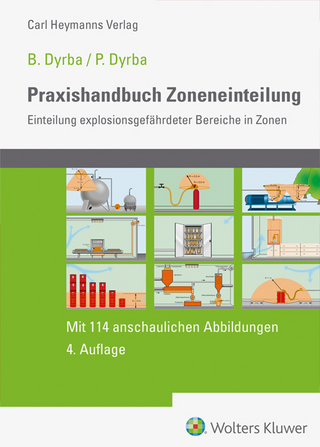
Properties of Polymers
Elsevier Science Ltd (Verlag)
978-0-444-82877-4 (ISBN)
- Titel ist leider vergriffen;
keine Neuauflage - Artikel merken
Properties of Polymers: Their Correlation with Chemical Structure; Their Numerical Estimation and Prediction from Additive Group Contributions summarizes the latest developments regarding polymers, their properties in relation to chemical structure, and methods for estimating and predicting numerical properties from chemical structure. In particular, it examines polymer electrical properties, magnetic properties, and mechanical properties, as well as their crystallization and environmental behavior and failure. The rheological properties of polymer melts and polymer solutions are also considered. Organized into seven parts encompassing 27 chapters, this book begins with an overview of polymer science and engineering, including the typology of polymers and their properties. It then turns to a discussion of thermophysical properties, from transition temperatures to volumetric and calorimetric properties, along with the cohesive aspects and conformation statistics. It also introduces the reader to the behavior of polymers in electromagnetic and mechanical fields of force. The book covers the quantities that influence the transport of heat, momentum, and matter, particularly heat conductivity, viscosity, and diffusivity; properties that control the chemical stability and breakdown of polymers; and polymer properties as an integral concept, with emphasis on processing and product properties. Readers will find tables that give valuable (numerical) data on polymers and include a survey of the group contributions (increments) of almost every additive function considered. This book is a valuable resource for anyone working on practical problems in the field of polymers, including organic chemists, chemical engineers, polymer processers, polymer technologists, and both graduate and PhD students.
From the preface to the first edition (1972)From the preface to the second edition (1976)Preface to the third editionAcknowledgementsPart I. General introduction: A bird's-eye view of polymer science and engineering Chapter 1. Polymer properties Approach and Objective Bibliography Chapter 2. Typology of polymers A. Polymer structure B. Molecular mass and molecular mass distribution C. Phase transitions in polymers D. Morphology of solid polymers E. Polymeric liquid crystals F. Multiple component polymer systems G. Relaxation phenomena Appendix I. Milestones in the history of polymer science Appendix II. Chronological development of commercial polymers Bibliography Chapter 3. Typology of properties A. The concept "Polymer properties" B. Physical quantities and their units C. Categories of physical quantities D. Dimensionless groups of quantities E. Types of molar properties F. Additive molar functions BibliographyPart II. Thermophysical properties of polymers Chapter 4. Volumetric properties A. Fundamental quantities of mass and volume B. Standard molar volumes at room temperature (298 K) C. Thermal expansion D. Isothermal compression - Equations of state Bibliography Chapter 5. Calorimetric properties A. Heat capacity B. Latent heat of crystallization and fusion (melting) C. Enthalpy and entropy Bibliography Chapter 6. Transition temperatures A. The glass transition temperature B. The crystalline melting point C. Relationship between glass transition temperature and melting point of polymers D. Relationship between Tg, Tm and other transition temperatures E. Transitions in thermotropic liquid crystal polymers Appendix I. Rules of thumb for substituting a H-atom by a group X Appendix II. Similarities and differences between Yg and Ym Bibliography Chapter 7. Cohesive properties and solubility A. Cohesive energy B. Solubility C. Internal pressure Bibliography Chapter 8. Interfacial energy properties A. Surface energy of liquids and melts B. Surface energy of solid polymers C. General expression for the interfacial tension D. Polymer adhesion Bibliography Chapter 9. Limiting viscosity number (intrinsic viscosity) and related properties of very dilute solutions A. Molecular dimensions of the conformational state B. The limiting viscosity number (intrinsic viscosity) C. Interrelationships of "limiting" diffusive transport quantities BibliographyPart III. Properties of polymers in fields of force Chapter 10. Optical properties A. Optical properties in general B. Light refraction C. Reflection D. Birefringence (and optical rotation) E. Light scattering F. Absorption G. Optical appearance properties Bibliography Chapter 11. Electrical properties A. Dielectric polarization B. Static electrification and conductivity C. Ultimate electrical properties Bibliography Chapter 12. Magnetic properties A. Magnetic susceptibility (Magnetic inductive capacity) B. Magnetic resonance Bibliography Chapter 13. Mechanical properties of solid polymers A. Elastic parameters B. Rubber elasticity C. Viscoelasticity D. Ultimate mechanical properties E. Mechanical properties of uniaxially oriented polymers (fibers) Bibliography Chapter 14. Acoustic properties A. Sound propagation and absorption B. Additive molar functions for sound propagation C. Sonic absorption BibliographyPart IV. Transport properties of polymers Chapter 15. Rheological properties of polymer melts A. Modes of deformation and definition of viscosity B. Newtonian shear viscosity of polymer melts C. Non-Newtonian shear viscosity of polymer melts D. Extensional viscosity of polymer melts E. Elastic effects in polymer melts F. Rheological properties of liquid crystal polymer melts Appendix I. Flow of polymer melts through narrow tubes and capillaries Appendix II. Analysis of flow in processing operations Bibliography Chapter 16. Rheological properties of polymer solutions A. Dilute polymer solutions B. Concentrated polymer solutions C. Extensional deformation of polymer solutions D. Solutions of lyotropic liquid crystal polymers Bibliography Chapter 17. Transport of thermal energy Thermal conductivity Bibliography Appendix Chapter 18. Properties determining mass transfer in polymeric systems A. Permeation of simple gases B. Permeations of a more complex nature C. Dissolution of polymers as a case of permeation D. Bibliography Chapter 19. Crystallization and recrystallization A. Crystallinity, nucleation and growth B. Spherulitic crystallization of polymers from the melt C. Induced crystallization of flexible polymeric molecules by pressure and stress D. Extended chain crystallization of flexible polymer chains E. Extended chain crystallization of rigid macromolecules BibliographyPart V. Properties determining the chemical stability and breakdown of polymers Chapter 20. Thermochemical properties A. Thermodynamics and kinetics B. Calculation of the free enthalpy of reaction from group contributions C. Thermodynamics of free radicals Bibliography Chapter 21. Thermal decomposition A. Thermal degradation B. Char formation C. Kinetics of thermal degradation Bibliography Chapter 22. Chemical degradation BibliographyPart VI. Polymer properties as an integral concept Chapter 23. Intrinsic properties in retrospect A. Reference values of intrinsic properties expressed as a function of additive quantities B. Effect of structural groups on properties C. Dependence of intrinsic properties on process variables D. Outlook Chapter 24. Processing properties A. Classification of processes B. Some important processing properties C. Implementation of processing research Bibliography Chapter 25. Product properties (I): Mechanical behaviour and failure A. Failure mechanisms in polymers B. Deformation properties C. Toughness and endurance D. Hardness E. Friction and wear F. The mechanical shortcomings of homogeneous materials and the need for composites Bibliography Chapter 26. Product properties (II): Environmental behaviour and failure A. Thermal end use properties B. Flammability of polymers C. Environmental decay of polymers in liquids Bibliography Chapter 27. An illustrative example of end use properties: Article properties of textile products A. Aesthetic properties B. Use or performance properties C. Maintenance or care properties D. Integral evaluation of fibre polymers, fibres and yarns by the criteria mentioned (profile method) BibliographyPart VII. Comprehensive tables I. International system of units (SI) II. Survey of conversion factors III. Values of some fundamental constants IV Physical constants of the most important solvents V Physical properties of the most important polymers VI. Published data on "high performance" polymers VII. Code symbols for the most important polymers VIII. Trade names and generic names IX. Survey of group contributions in additive molar quantitiesIndexation Symbol index Author index Subject index
| Erscheint lt. Verlag | 17.11.1997 |
|---|---|
| Verlagsort | Oxford |
| Sprache | englisch |
| Gewicht | 1580 g |
| Themenwelt | Technik |
| ISBN-10 | 0-444-82877-X / 044482877X |
| ISBN-13 | 978-0-444-82877-4 / 9780444828774 |
| Zustand | Neuware |
| Haben Sie eine Frage zum Produkt? |
aus dem Bereich


